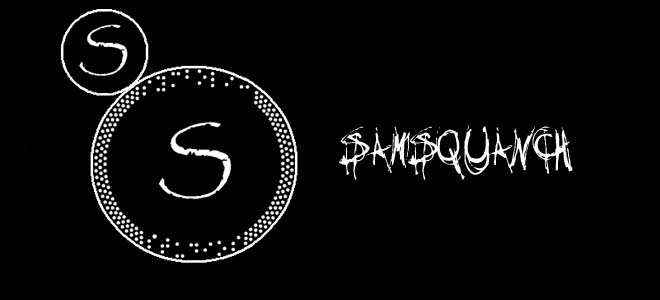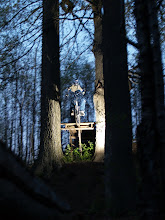So I have my light foundation with the drums, just a shell that I can build over top of - again nothing special, but gives the track its first identity and usually is a good indicator of what type of track it will be. I originally started this track with the idea of a dubstep tune in my head (idea being that I wanted to make a dubstep track, not conscious yet of the elements).
With the bass line, I'm using Native Instruments MASSIVE which is a nice flexible synth and one that is easy to use to get a nice big sound (and I believe it is a well used weapon in dubstep). This is a new synth to me, but one I like because, as I said, it's pretty intuitive to use which is a big bonus. So I set out to make my own patch, something I've been working on lately instead of using presets. The process involves using Oscillators to create waveforms, and then use filters and efx to shape the waveforms into something you would use. I was able to get a decent sound pretty quick and used the LFO (low frequency Oscillator) to make the bass wobble by assigning it to the filter cutoff of the onboard efx (what this does is make the filter cutoff, the frequency which is allowed through the filter, to move in either a synched or non-synched way, giving you a decent 'wobble' effect on the bass). Had this in place and used a simple 2 note bass line with some wobble applied.
Now I have my drums and bass, I usually look to add the synth/keys here or I focus on adding rhytmic elements to the drums to add some depth and movement. On this track, I decided to go with the synth/keys first and use a new Virtual Synth I picked up for a steal (regular $150, got it for $15!!) which is Applied Accoustics Ultra Analog VA-1. Another easy to use synth that resembles the 'analog' world. For those of you who don't know, there is the eternal debate of digital vs analog. Some people think digital sounds like crap and analog is warm and fuller sounding - and you get those who say you can't tell the different. I really don't care as long as it sounds good in the context of my tracks... and digital is cheaper and more accessible. Anyways, a great synth that I wanted to start incorporating into my work flow and what better chance to use it than here!
I found a nice pad like sound and, keeping things in key, sequenced out a simple 2 note synth line. Nothing special cuz my music theory sucks, so I have to keep things simple - hwoever, to me, the simple stuff usually sounds the best (or maybe I'm just biased!!). The riff was sitting ok in the mix, but was hitting the same time as a kick and the bass, so things were a bit clogged in this space. To make things breathe a bit better, I eq'd all these elements to carve out some space and give the sounds room to breathe - this worked pretty good, but had to do something else to bring the kick out.
This brings out another tool from the toolbox which is very handy if used correctly (although this is probably over done in todays dance music). Side Chain Compression. Quick overview - compression is simply the idea that you set a threshold in db, and set a ration (ex. 1:2). What this means is that everytime the signal is below the threshold, it is brought up 1db. If the signal goes over the threshold, the signal is reduced by 2 db - so you can manage the levels or db of your tracks better with Compression. Side Chain compression takes that idea and instead of setting a threshold manually, you use a secondary signal in order to set the threshold. So, in my case, I use Side Chain compression on the bass line track, and set the input (threshold) to the kick drum - this means that everytime the kick drum hits, the bass line track will be turned down based on my setting. As you can tell, this is a good technique for giving tracks room to breath, so here, this gives my kick drum space/room to breath over top of the bass line. You can use this technique in extreme ways to get a 'pumping' effect - something very prevalent in French House (ex. Daft Punk).
I think that's good for today, so in the mean time let me post the finished product of this process. I'll talk about the other aspects of the production in the next couple of posts.
Slow & Steady by Ypsi Kid
Subscribe to:
Post Comments (Atom)


No comments:
Post a Comment